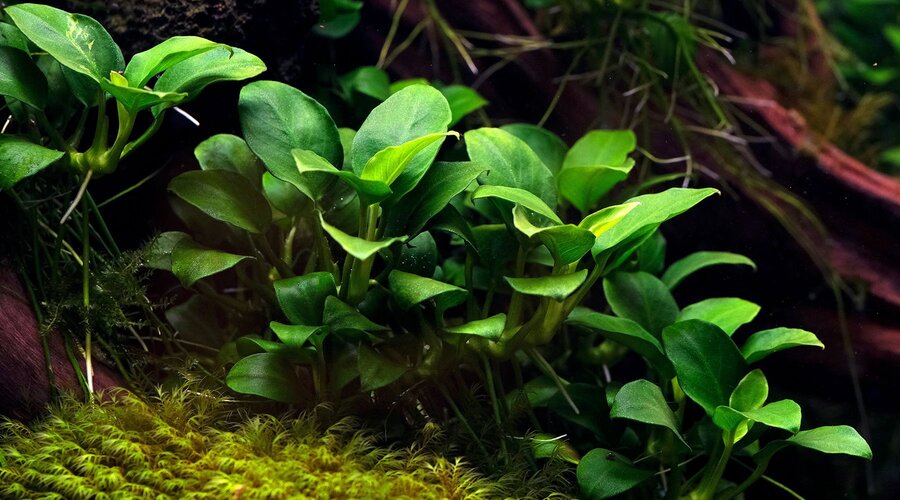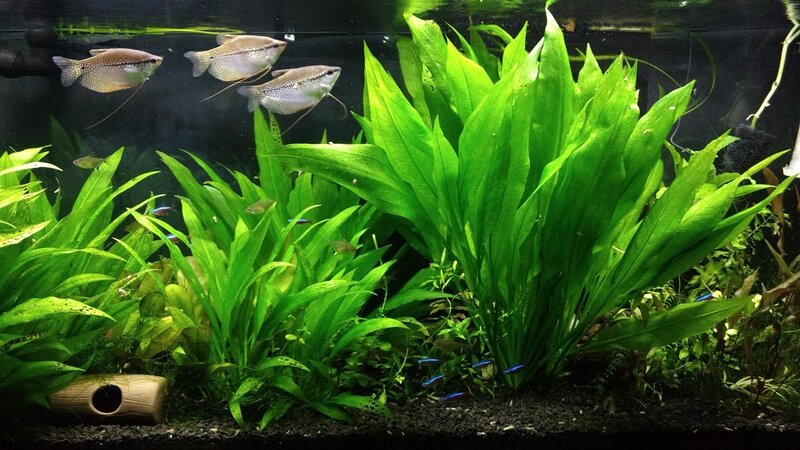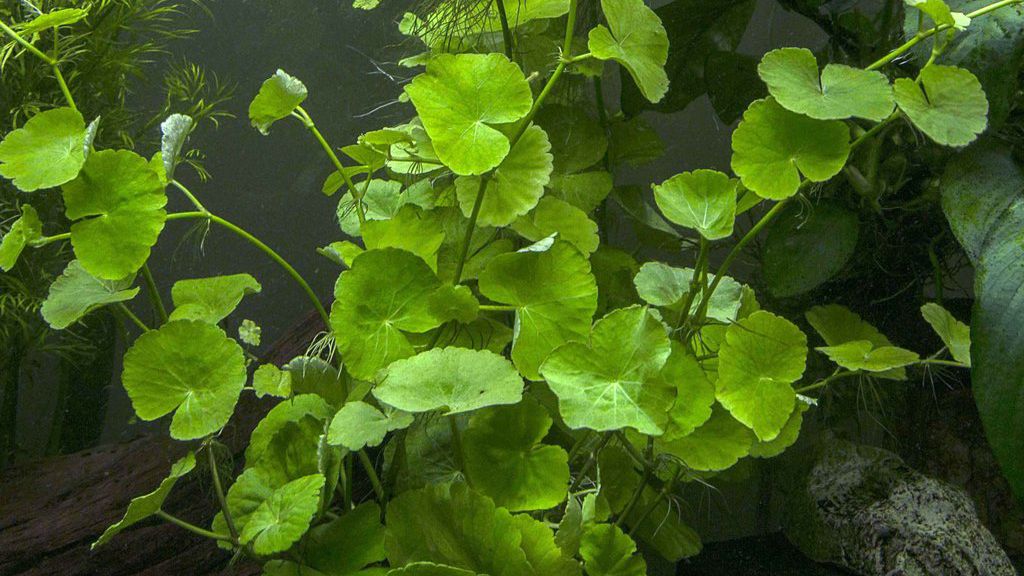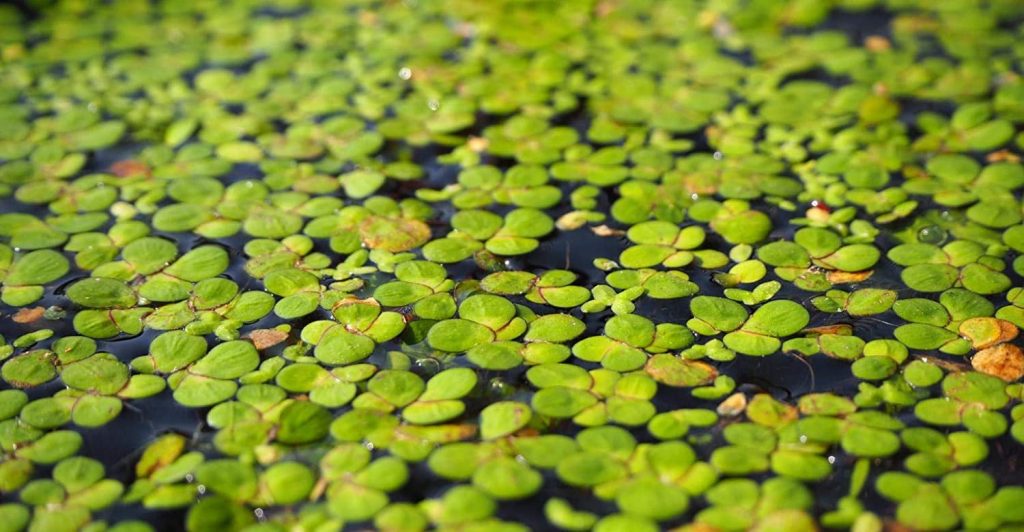Are you thinking of getting some aquarium plants that don’t need CO2? There are many benefits of adding live plants to your aquarium. From naturally improving water quality and providing hiding spots for your fish, to making the tank look prettier. Likewise, they can also reduce nitrate levels in the water.
If you don’t want to set up a carbon dioxide system but still want to keep some plants, don’t worry. You just have to get the right aquarium plants that can grow and survive without carbon dioxide, which can be great if you are just starting out in this hobby.
Table of Contents
Are There Aquarium Plants that Don’t Need CO2 to Grow?
We all know that plants require carbon dioxide for photosynthesis; they also need it to grow. However, there are a few aquarium plants that can actually survive without carbon dioxide. They will still grow, only slower. Most of the plants we will discuss below are relatively easy to care for and perfect for those just starting out.
Even so, remember that these plants need other things like nutrients to thrive! We recommend supplementing your live plants with liquid fertilizer to help them remain alive and healthy.
Here list of aquarium plants that don’t need any additional carbon dioxide system to grow:
1. Cryptocoryne

- Light: Low
- pH: 6-8
- Temperature: 18-30 C
- Aquascaping position: Center, foreground
Cryptocoryne, sometimes known as the crypt, is a hardy plant and a favorite choice for many aquarists. They are great to have with large fishes and won’t be uprooted, thanks to their strong roots.
Crypts can be quite sensitive to water changes, so try to keep the water parameters as stable as possible. Otherwise, they may start shedding their leaves.
It’s also normal for crypt leaves to fall off when you first place them in an aquarium. Don’t remove them because they are not dying! Instead, they’re simply adapting to underwater life. Overtime they will even grow to be more luscious than before.
Types of Cryptocoryne
With so many colors, sizes, shape varieties, and types of crypts, you can easily find the right one to suit your tank. We can’t possibly list them all here, but these are some of the more popular ones:
- Cryptocoryne Wendtii
- Cryptocoryne Pontederifolia
- Cryptocoryne Undulata
- Cryptocoryne Parva
- Cryptocoryne Lucens
- Cryptocoryne Willisii
2. Anubias

- Light: Low to medium
- pH: 6-8
- Temperature: 22-26 C
- Aquascaping position: Center, foreground, background
You can plant anubias in almost any type of substrate, including rocks, sand, and soil. As such, it’s easy to adapt them depending on the conditions in your aquarium or aquascape tank. They are naturally found in shaded areas and so don’t need high lighting to thrive.
Anubias is also easy to propagate, allowing you to grow a single plant into many more. Just divide the stolon into several pieces and watch as they develop within just three days!
Types of Anubias
There are many subspecies of anubias, and these are just a few of them.
- Anubias afzelii
- Anubias barteri
- Anubias barteri var. Nana
- Anubias gigantea
- Anubias gracilis
- Anubias hastifolia
3. Java Fern

- Light: Low
- pH: 6-8
- Temperature: 20-30 C
- Aquascaping position: Foreground
When planting Java fern, you should attach them to some driftwood or other loose pieces. Do not plan them directly in the substrate. With that said, Java fern is very hardy and adaptable, making them very well-loved by beginners. They can also survive in a wide range of water conditions.
4. Amazon Swords

- Light: Medium to high
- pH: 6.5-7.5
- Temperature: 23-28 C
- Aquascaping position: Center, background
Amazon swords look extremely beautiful in the background, especially because they’re quite tall. Use them to cover filters or heaters and maintain a lush tank. However, this plant needs a lot of light to survive (ideally 8-10 hours every day).
Another thing about Amazon swords is that their roots can grow deep into the substrate, so it is important to have a thick substrate. Don’t forget to provide root tabs too, as they get their nutrients from the roots.
5. Water Wisteria

- Light: Medium to high
- pH: 6.5-8
- Temperature: 20-30 C
- Aquascaping position: Background
Wisteria can be the best aquarium plant for beginners because it’s hardy and doesn’t require much maintenance. Plant it at the back to form a stunning bright green background, and to provide shelter for some of your fishes.
Moreover, you can root wisterias on the ground or let it float near the surface. Plus, they are easy to propagate, which means you can multiply the wisteria in your tank!
6. Pennywort

- Light: Medium
- pH: 6.5-7.5
- Temperature: 20-28 C
- Aquascaping position: Foreground, background
When planting pennywort in your aquarium, their penny-shaped leaves can creep along the stem like a vine. It grows quickly and can reach at least 8 inches tall. Whether you have an aquatic tank or bog-like setting, pennyworts can be an excellent addition to it.
Certainly, this aquatic plant is perfect for a tropical aquarium, especially if you are housing tropical species like tetras.
7. Vallisneria

- Light: Medium to high
- pH: 6.5-8.5
- Temperature: 18-30 C
- Aquascaping position: Background
Compared to Java ferns and anubias, planting Vallisneria may not be as easy. But if you do it right, they can be a fascinating plant to have. Their long vertical green leaves can look quite stunning as a backdrop in your aquarium. Additionally, Vallisneria leaves can offer shelter for small fish species.
They are root feeders, so it can be beneficial to provide some soil fertilizers. We recommend using root tabs, which are easy to buy and apply.
8. Java Moss

- Light: Low to high
- pH: 5-8
- Temperature: 20-25 C
- Aquascaping position: Foreground
Among the many types of aquarium moss, Java moss is probably the most popular one. It’s ideal for beginners, but still suitable for experienced hobbyists too. While they can tolerate a wider range of temperature (10 to 30 C), it’s best if you can keep it at around 20-25 C.
In addition, Java moss can live with low or high lighting conditions, though a brighter environment can encourage the moss to be denser. You can use this plant to cover a variety of surfaces, from rocks, woods, to walls, and even filters.
9. Fontinalis Moss

- Light: Low to medium
- pH: 6-8
- Temperature: 10-28 C
- Aquascaping position: Foreground, background
When planting pennywort in your aquarium, their penny-shaped leaves can creep along the stem like a vine. It grows quickly and can reach at least 8 inches tall. Whether you have an aquatic tank or bog-like setting, pennyworts can be an excellent addition to it.
If you are looking for some more carpeting plants, consider using Fontinalis moss. Also known as willow moss, it is a popular choice for beginner and experienced aquarists alike. They are easy to care and can diversify your aquarium beautifully.
10. Duckweed

- Light: Medium to high
- pH: 6-8
- Temperature: 15-32 C
- Aquascaping position: Floating
Unlike most of the plants we have featured so far, Duckweed is quite unique because it floats in the water and will sit right on the surface. When you use Duckweed in your tank, there will be a luscious green carpet on top of it. It means providing shelter and shade for the fishes inside.
Interestingly, Duckweed is actually among the smallest flowering plants. You can only see the flowers using a microscope! From above, these plants resemble tiny lily pads.
Final Thoughts
All in all, choosing the right aquarium plants that can grow and propagate without CO2 can be quite simple. These are some of our favorites and recommendations, most of which are suitable for beginners and experts alike.
So, which live plant are you thinking of introducing to your aquarium? Did we miss anything else? Let us know in the comments below!






